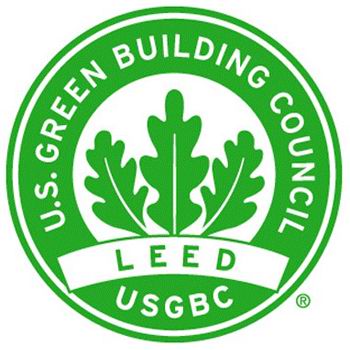LEED Certification - Bamboo
Nov 13, 2025, 7:30 AM
LEED (Leadership in Energy and Environmental Design) is a tool for evaluating of green building. The objective is to effectively reduce the negative impact of the environment and occupants in the design. The objectives are to specify a complete and accurate concept of green building, to prevent the abuse of green building. LEED was launched and established in 2003 by the U.S. Green Building Council, in some U.S. states and some countries LEED has been classified as a statutory mandatory standards.
U.S. Green Building Council
U.S. Green Building Council (USGBC) is a national non-profit organization headquartered in Washington DC. USGBC's members are organizations (businesses, government agencies, non-profit organizations, etc.) rather than individuals. USGBC's main activity is to develop and administer the Leadership in Energy and Environmental Design (LEED) Green Building Rating System. LEED was created in the late 1990s by pioneers in the green building movement to create a common standard for defining and assessing environmentally-responsible, whole-building, high-performance design and building practices. It was also intended to stimulate green competition among the tens of thousands of companies that supply the building industry.
LEED Certifies Buildings, not Products
Many products manufacturers said our products is LEED certified, actually, this is not tree, because LEED doesn't certify any products, only buildings which had used many LEED-compliant products such Bamboo flooring, with this building, it will be LEED certified. Product only contributes towards earning LEED points.
How To Earn LEED Points
LEED points are earned by using LEED-compliant products such as those that contain recycled content, no added formaldehyde, and FSC certified wood. Using any single LEED-compliant product usually will not be enough to earn a point, but it will contribute. You will achieve LEED certification for the building by earning a certain number of points.
Wood and Bamboo Flooring Credits
- Materials and Resources 4.1 and 4.2 - Recycled Content Reclaimed wood or recycled-content underlayment
- Materials and Resources 5.1 and 5.2 - Regional Materials Flooring or accessories extracted, processed and manufactured within 500 miles of project
- Materials and Resources 6 - Rapidly Renewable Materials Bamboo flooring (Engineered Bamboo does not count due to its wood content)
- Materials and Resources 7 - Certified Wood FSC-certified wood flooring
- Indoor Environmental Quality 4.1 - Low-emitting Materials - Adhesives and Sealants Installation adhesives with no more than 100g/L VOC content
- Indoor Environmental Quality 4.2 - Low-emitting Materials - Adhesives and Sealants Floor finishes with no more than 100g/L VOC content
- Indoor Environmental Quality 4.4 - Low-emitting Materials - Composite Wood and Agrifiber Products Engineered wood and bamboo flooring that contains no added urea-formaldehyde resins
Materials and Resources is shortened as MR and Indoor Environmental Quality is shortened as IEQ. Above LEED points are for commercial construction and buildings and homes LEED are just started from summer of 2007. Bamboo flooring is a absolutely in the LEED chapter and can earn the point because bamboo is the green and rapidly renewable materials rather than wood.



 皖公网安备 34180202000049号
皖公网安备 34180202000049号